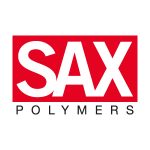Blends combine two or more compatible polymers. The positive properties of the individual materials are combined with one another in order to produce the best result for any application. This method is almost as old as polymers engineering itself and continues to develop today. Advantages such as improved processability, increased dimensional stability under heat or reduced stress cracking are the goals of this polymer blend.
CYCOLOY™ – For strength and processability
CYCOLOY™ polycarbonate/acrylonitrile-butadiene-styrene (PC/ABS) high impact amorphous thermoplastic blends combine ease of processing with low-temperature ductility. With excellent impact resistance, heat resistance, and outstanding aesthetics, CYCOLOY resin blends can be tailored to meet specific property requirements, to help balance performance, cost and processability. CYCOLOY™ resin blends provide an excellent design solution when both appearance and durability are important.
XENOY™ – Aesthetic Appeal, Impact Resistance
The XENOY™ alloy is a blend of semi-crystalline polyester (typically polybutylene terephthalate, PBT, or polyethylene terephthalate, PET) and polycarbonate (PC). The XENOY™ resin family offers good chemical resistance, great impact resistance even at low temperatures, heat resistance, and outstanding aesthetic and flow characteristics. XENOY™ alloys offer outstanding performance in applications that are exposed to harsh conditions, or that require a high degree of toughness.
XYLEX™ – Strong Chemical Resistance Plus Clarity
XYLEX™ resins are a transparent blend of polycarbonate (PC) and an amorphous polyester. Compared to PC, the polyester in XYLEX™ resin provides enhanced chemical resistance against certain fluids, enhancing the resin’s stress crack resistance. It also permits lower processing temperatures than straight PC.


